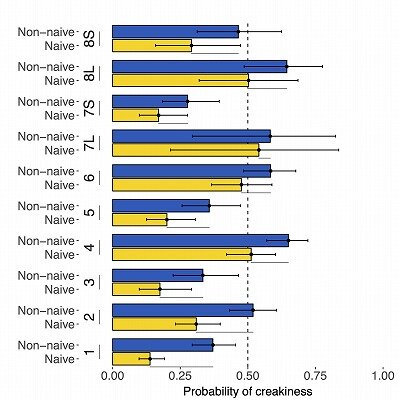Speech Communication(※) published online a study led by Prof. Julián Villegas of the University of Aizu (UoA) on January 25, 2023, titled "Psychoacoustic features explain creakiness classifications made by naive and non-naive listeners."
This research is important because it uses well-known standardized psychoacoustic models for the prediction of phonation, therefore focusing on the listener end of the speech chain in a perception-based classification. The results presented could be used for improving the automatic detection and classification of creaky speech, and it could be extended to other kinds of phonation.
This research was supported by the JSPS Kakenhi Grant No. 20K11956.

<Details of the paper>
Name of Journal : Speech Communication
Authors : Julián Villegas (Department of Computer Science and Engineering, UoA)
Seunghun J. Lee (Department of Psychology and Linguistics, International Christian University)
Jeremy Perkins (Centre for Language Research, UoA)
Konstantin Markov (Department of Computer Science and Engineering, UoA)
Title : Psychoacoustic features explain creakiness classifications made by naive and non-naive listeners.
Date of publication : 25 Jan. 2023
Link to publication : https://doi.org/10.1016/j.specom.2023.01.006
※About Speech Communication
Speech Communication is a publication of the European Association for Signal Processing (EURASIP) and the International Speech Communication Association (ISCA). Speech Communication is an interdisciplinary journal whose primary objective is to fulfil the need for the rapid dissemination and thorough discussion of basic and applied research results.
In order to establish frameworks to inter-relate results from the various areas of the field, emphasis will be placed on viewpoints and topics of a transdisciplinary nature.
The editorial policy and the technical content of the Journal are the responsibility of the Editors and the Institutional Representatives.
The Institutional Representatives assist the Editors in the definition and the control of editorial policy as well as in maintaining connections with scientific associations, international congresses and regional events.
It has an impact factor of 2.723, CiteScore of 5.5, and an acceptance rate of 25%. More information is available at https://www.sciencedirect.com/journal/speech-communication


